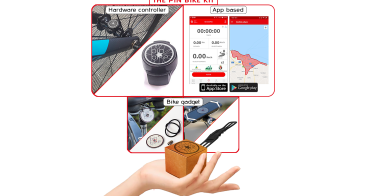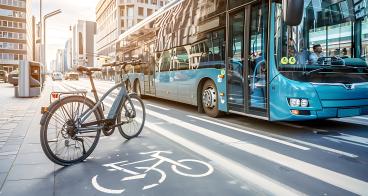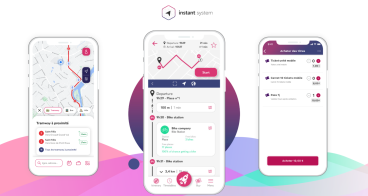Multimodal hubs: a new era of urban transport connectivity
Multimodal hubs are reshaping urban mobility, providing efficient, sustainable solutions that encourage a shift away from private car use.
By integrating various transport modes - public transport, shared mobility services, and active transport options - these hubs simplify the user experience, reduce traffic congestion and make mobility more efficient. However, the success of such hubs relies heavily on collaboration between stakeholders.
In the following article, we will explore four use cases from cities that have embraced multimodal hubs, each illustrating their unique approaches and the impact these hubs have had on local mobility. These examples offer insights from diverse urban environments and highlight the transformative potential of multimodal hubs in building more connected, sustainable cities.
Las Palmas: pathway towards multimodal integration
In Las Palmas, Canary Islands in Spain, two test sites - La Ballena and Siete Palmas - are leading the way in the city's multimodal transformation. The hubs are designed, in the context of SPINE, an EU funded project, to integrate new mobility services managed by the city, such as the bike-sharing system “Sitycleta,” e-scooters “Sityneta,” and key bus routes like “Metro Guagua.” Users can access real-time information, ensuring a smooth transition between these services. A uniform visual identity makes it easy for passengers to identify arrival and departure points, while special signage caters to the visually impaired. To further enhance accessibility, the city has introduced spider maps for easy navigation.
Las Palmas initiative also faced several obstacles. Data availability and alignment among various public transport operators, shared mobility providers, and city planning documents, like SUMPs (Sustainable Urban Mobility Plans), remain limited. Additionally, the existing city's bike lane network and prioritisation of public space make private car use more attractive - private cars held a 49% modal share in 2020, compared to only 14% for public transport.
Addressing these challenges will require both physical and digital infrastructure investments to foster better collaboration among stakeholders.
Despite the challenges, the multimodal hub concept in Las Palmas plays a crucial role in connecting various public transport modes, making last-mile mobility more efficient. By enabling quick and easy transitions between different transport options, these hubs help channel people across the city without the need for private vehicles. To achieve seamless multimodality, it is essential for these hubs to offer multiple transport services within the same area, such as bikes and scooters, conveniently located near other urban facilities.
Tallinn: navigating challenges in a growing urban landscape
In Tallinn, Estonia, the rising number of private cars - up 5% annually - has contributed to a decline in public transport usage, which currently holds a 41% modal share. Despite offering free public transport, the city also faces an unregulated market for car-sharing, ride-hailing, bike-sharing, and micromobility services. Tallinn is home to five historical multimodal hubs, with plans for six more near large shopping centres, aligning with the city's push towards the 15-minute city concept, where essential services are within a short, walkable distance.
The city of Tallinn has developed a test site, also as part of SPINE project, located at Kristiine Centre in the heart of the city, which demonstrates the potential of these hubs. Situated next to a busy train station and a major shopping mall, the site connects various mobility services, improving multimodality by offering proximity to bus and train stops.
The integration in Tallinn faces some challenges. The absence of car-sharing options in the area limits the effectiveness of its multimodal approach, making it less seamless for users. Data collection from both public and private operators also remains a hurdle, as does the lack of cooperation between different mobility providers. Additionally, the accessibility of these hubs for people with reduced mobility is limited, and the debate continues over the ideal placement of multimodal hubs.
Even though certain hurdles must be taken into account, Tallinn continues to offer numerous advantages for using public transport. With an extensive network of public transport lines and the benefit of free transit, the city encourages widespread usage. Additionally, Tallinn envisions the development of pedestrian tunnels and already provides a variety of micromobility options conveniently located throughout the city, facilitating last-mile travel and enhancing multimodality. While Tallinn’s multimodal hubs offer a glimpse into the future of urban mobility, continued collaboration between operators and careful location planning will ensure long-term success.
Mannheim: regulating multimodal hubs for greater efficiency
Mannheim, a city in southwest Germany, is witnessing a rapid increase in shared mobility services, requiring careful coordination and regulation to ensure that these services complement public transport rather than compete with it. In response, the city has developed multimodal hubs that integrate shared mobility services with public transport, creating visible, well-organised spaces that help tidy up sidewalks and regulate the presence of free-floating electric micromobility options. Within a 200-meter radius of these hubs, street-side parking of free-floating mobility services is not allowed, and a unified regional design for signage and public transport linkage has been implemented to enhance clarity and usability.
One notable test site in Mannheim, as part of the EU funded-project UPPER, includes a pilot multimodal hub concept that integrates multimodality into the public transport operator’s standard construction planning. Every new or upgraded public transport stop will incorporate multimodal features moving forward, aligning with local and regional policies and developed in consultation with cities, public transport authorities, and public transport operators.
Mannheim’s journey to establish effective multimodal hubs is not without challenges. Coordinating with a wide range of stakeholders to create a common, cooperative design has proven difficult. Additionally, finding suitable space in the city’s central districts presents a logistical challenge, as does regulating free-floating operations to keep hubs tidy without monopolisation by shared mobility operators. Prioritising the multimodal concept within city administration, and raising awareness are also crucial steps for ensuring the hubs' success.
In the city, multimodal hubs serve multiple functions. They integrate shared mobility options with public transport, helping to streamline the sidewalks by reducing micromobility congestion, which had posed safety concerns. Additionally, they effectively raise the visibility of various sustainable mobility options. Mannheim’s approach also emphasises the importance of integrating shared mobility with public transport through structured regulations and thoughtful planning, ensuring the city’s transport ecosystem functions harmoniously.
Gothenburg: pioneering the mobility hotel concept
In Gothenburg, Sweden is, as part of MOVE21 project, transforming the way mobility is integrated into the urban environment. At the heart of this transformation is the innovative "mobility hotel" concept, which brings together a variety of sustainable mobility services under one roof, situated in one of the city’s most vibrant, densely populated areas.
The mobility hotel, located within a major shopping mall, features both a frontend and backend area. The frontend is designed for public access, offering micromobility services and products, including a battery swap facility for both individual users and businesses like food delivery couriers. It also houses a cargo-bike hub with a direct connection to the mall’s loading bay. Meanwhile, the backend includes a pool of trial bikes for service providers, an unmanned warehouse store for professional wholesalers, co-working spaces, and goods consolidation facilities, all linked to the loading bay.
Gothenburg’s innovative mobility hub also faces several challenges. Aligning the diverse goals of involved stakeholders - some driven by business interests, others by the needs of citizens - has proven difficult. Space availability for the hub’s deployment was another challenge, although the mall’s willingness to provide space for the mobility hotel helped mitigate this issue.
The Gothenburg mobility hotel showcases how innovative business models, supported by strong municipal backing, can provide a sustainable and scalable solution for modern urban mobility. Its strength lies in addressing the diverse needs of citizens commuting for various purposes and providing businesses, among other benefits, with easier access to micromobility for their operations. Equally important is the true sharing of space, customers, expertise, risks, and services, fostering a collaborative and efficient urban mobility ecosystem.
Conclusion
As cities increasingly embrace multimodal hubs, several factors emerge as critical for their success. Firstly, citizen participation in the design of these hubs plays a vital role in ensuring that the needs of the public are reflected in both the process and outcomes.
Urban design also plays a significant part in the success of these hubs. Incorporating facilities like shelters, water fountains, and even playgrounds for children can enhance the user experience, encouraging greater adoption. These hubs must align with a city’s overarching strategy for sustainable mobility, ensuring they contribute to long-term goals. Moreover, seasonal weather disturbances can affect the usage of multimodal hubs, and actions to mitigate these disruptions, such as appropriate infrastructure and design, are essential for consistent service.
The location and visibility of these hubs have a significant impact on service uptake. Poorly located or insufficiently promoted hubs can result in lower usage. Similarly, the role of the private sector is crucial, with the involvement of micromobility and shared mobility actors needed for collaborative processes that enhance service offerings and integration.
Finally, multimodal hubs contribute to the development of safe cycling and micromobility infrastructure. By fostering these spaces, cities can create better, safer infrastructure for cycling and e-scooters, which in turn encourages greater use of these sustainable transport options. As cities worldwide explore and implement these hubs, the lessons learned from various case studies highlight the importance of thoughtful, inclusive design and strong collaboration between public and private stakeholders.
This article was produced in collaboration with CIVITAS. Special thanks to:
- Manuel Crespo, CINESI SLU (SPINE)
- Madis Sassiad, Tallinn Transport Department (SPINE)
- Tim Neugebauer, City of Mannheim and Julian Schrögel, Rhein-Neckar-Verkehr GmbH (UPPER)
- Suzanne Green, City of Gothenburg (MOVE21)
If you're interested in learning more about multimodal hubs and the experiences of these four cities, check out the webinar below.






